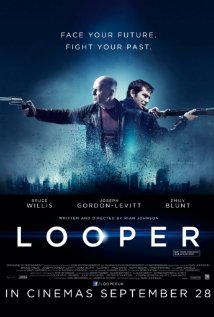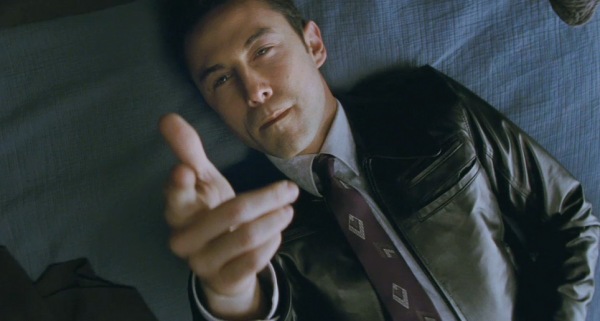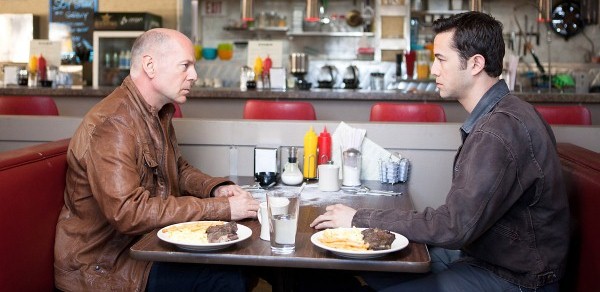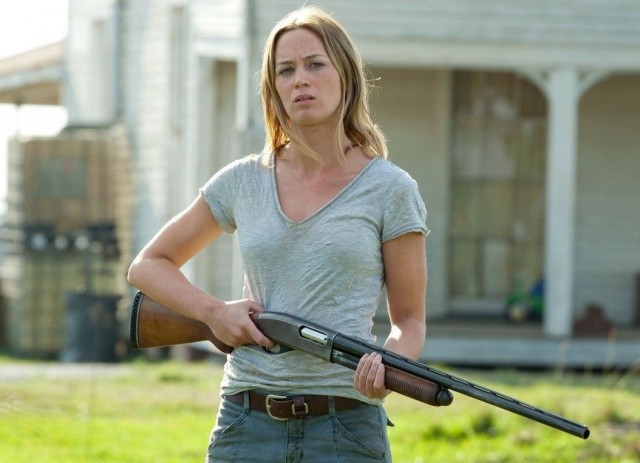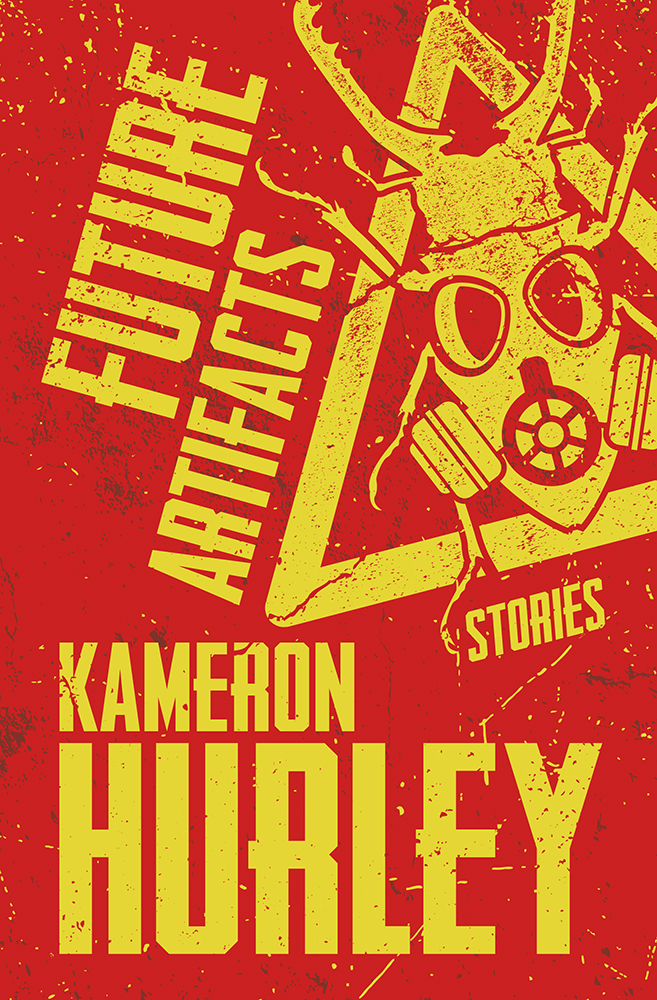Note: Post contains ALL THE SPOILERS for this film.
The shift to gritty fantasy over the last couple decades has been a long time coming. I’d argue that those of us who grew up watching heroes like Snake Pliskin and Mad Max and Ellen Ripley but reading about smarmy do-good boys with birthmarks and wilting heroines were inspired to spice up the old tropes with a bit of grimdark ourselves mainly because we’d watched too many 80’s movies and wanted our novels to look more like our films.
But for me, it’s also much more than that. See, I started to figure out that the myth of the hero I’d been fed wasn’t actually as do-good nice guy as I always thought it was. Old-school heroes are the self-sacrificing types, the ones unafraid to lay down their lives for a better world. But I started to notice that we saw fewer and fewer of those. Instead, what we saw was the rise of the “nice guy” hero – the guy who, on the face of it, does something heroic, but he does it to win something (and yes, it’s generally always a guy) – to get the girl, or achieve fame among his peers, or win a lot of money, or a great job. And, often, to simply “be a hero.” Guys were expected to do these heroic things not so much because they were right and just and best for the world, but because people would see them as heroic. It was for the recognition and fame, not because it was intrinsically right.
I would argue that there’s a huge difference between doing something because it’s right and doing something because it’s what people expect of you. Heroic people do things because they’re right, not because somebody is watching. Not because it’s what their parents or peers or anybody else would expect.
I tend to identify with non-heroic people pretty strongly. My moral compass is absolutely determined by who’s watching, and I’ll be the first to admit that. Maybe it’s why I’m so obsessed with the idea of heroes, and how to be heroic, and what it means to do the right thing even when you’d rather be a selfish jerk. It’s something I constantly battle with. I was raised to be an absolutely selfish person, and though that has safeguarded me somewhat in a world that values selfishness, in order to have relationships with actual humans I had to take a hard look at how much harm my selfishness was doing to the world in relation to the actual benefit it was supposedly giving me.
Looper is a film about a selfish jerk whose greatest opponent is, literally, himself. There are all sorts of smart things about this movie, and moderately fresh things, like setting a film about time travel in our future instead of our present. The opening hook of the film – 30 years from the movie’s present day (about 30 years from our present) time travel is invented, and since bodies are so difficult to dispose of in the future of our future, people are sent back to the past to be killed by young men called Loopers (yes, all men. ::sigh::). They’re neatly murdered with blunderbusses, which we’re told early on have a killing range of only about 15 yards. This becomes important later.
In fact, pretty much every detail you’re given up front becomes important later. There’s not a wasted beat. The writer in me was jumping up and down the whole time in glee at the experience of watching a smartly-written film
The twist here is that because what the Loopers do is kill people, which is a crime, at some point in the future they’re also going to be sent back and killed. As a sort of grim reward, they’re assigned to be killed by themselves, at which point they receive a big pay day and retire at 25 with a bunch of money – knowing they only have about 30 more years to live, and knowing exactly when and how they’ll die… at their own hand. This is called “closing your loop.”
People always want to talk about the Time Travel when they talk about Looper, but as somebody who writes hand-wavey fiction myself, I’ll tell you now that the logistics of that didn’t interest me all that much. Which is why I appreciated the throw away, “I’m not going to sit here and explain time travel to you” line that Bruce Willis delivers in the film (I laughed out loud at this).
Instead, what I’m really interested in here is the deconstruction/construction of the Hero that Looper plays with.
When we meet our Young Hero, he’s initially faced with a very tricky dilemma. One of his Looper friends has been tasked with killing his future self, but instead of killing him, he let him go. Our Young Hero initially agrees to hide him, and stows his friend away in his floor safe with the stash of silver bars he’s received from his killing work.
But when his boss confronts our Young Hero and asks him to give up his friend in return for keeping whatever’s in his safe… our Young Hero gives up his friend.
The friend isn’t killed, but is horribly, horribly maimed and mutilated in a very inventive and awesome way.
It’s this giving up of his buddy that’s really important here, because it shows the priorities of this particular Hero – life is about looking out for yourself, about money and power. There’s a scene, later, when he offers his favorite prostitute a bunch of money, and she steadfastly refuses it – “Money comes with strings,” she tells him, “and expectations.” She knows he’s not being altruistic. She knows he’s out for something, to buy something, to own something, and she refuses to be owned (though I was annoyed about having a prostitute in the movie, she was a real, clever person here, and I appreciated that – her eyeing the clock was also a nice touch).
We get two versions of the Hero finally confronting his older self – the one where his future self gets away, and the one where his young self kills his old self (because of course you can’t have the first future without the second). In the version where the Young Hero does kill the Old Hero we get the Life Montage, where we see our Hero being his anti-Hero self, acting as a hired gun in China, killing folks, doing drugs, and just generally fucking his life away as his 30 year clock ticks down.
Until he meets a Very Special Lady, of course.
Special Lady Saves him, and they live happily for two whole years while she cleans up his sorry ass. I rolled my eyes at this cliché. I mean, why would she want to be with this guy? She doesn’t even have any speaking lines in the whole movie! And then, of course, she dies horribly, murdered by the people who’ve come to scuttle off the Old Hero back to the Young Hero to get killed.
What the hell, women in refrigerators? I sat on my hands a bit during this one, annoyed but impressed enough with the writing thus far in the film to keep going. Surely this was going somewhere?
It was.
One of my favorite Jeff VanderMeer books is Veniss Underground. What I loved about this book is that there’s this Hero who chooses to go on this epic horrific crazy quest to save the woman he loves – knowing that she does not love him, and he will not “get” her. He knows there is no reward for him at the end. He will not win her love and affection. He just does it because he loves her, and because he couldn’t live with himself if he didn’t.
Our Old Hero, upon nearly escaping from his death sentence and being forced to go back in time and get shot by Young Hero, decides he will Save his Love from her horrible death by going back in time and destroying the guy who runs the organization that came after him and killed her. So he hops in the time machine anyway, and is confronted with Young Hero.
Young Hero, this time, fumbles, and Old Hero gets away to wreck revenge on his enemies and Save His Lady.
This is the yawn-worthy stuff, here. You know the tired old saw – I’m doing this to revenge my wife and children! This dead lady in the refrigerator will be avenged, damn you! It’s really all about her!
I’ve always been annoyed with the dead women in the refrigerator thing because it was so effing lazy. It’s like people were only putting women into the story to support the men’s stories, and they always had to die horribly. What I didn’t realize, until this movie laid it out explicitly, is the other big reason this is a problematic thing to use to drive your hero….
… avenging dead women in refrigerators isn’t actually heroic.
Old Hero confronts Young Hero to explain that he must kill the head of this organization now, while the man or woman is still a child, in order to prevent his True Love from dying.
Young Hero demands to see the photo of the woman. “You can save her right now,” Young Hero says. “Just show me her picture and when I see her in the future I’ll head the other direction.”
The look Old Hero Bruce Willis delivers here to Young Hero is the reason he’s Bruce Willis. It’s this half-outraged, half-hurt look, and he cups the image of the woman in his hands, instinctively shielding her image from his younger self. “This woman saves you,” he said. “You don’t deserve it. But she’s the one bright, great thing in your life. She saves you.”
“And you can save her,” Young Hero says. “Just show me her picture.”
Dear reader, let me tell you:
He doesn’t show his younger self the photo.
Western civilization in particular has a long history of viewing women and children as men’s property. When you wanted to dishonor a man, you assaulted his property. You murdered and/or abused and/or enslaved his wife and children. And that’s till true today to a large extent. Men are still judged by the beauty and fidelity of their wives, and if they can’t “keep them safe” they’re seen as somehow lesser men. The classic revenge narrative that has led to the women in refrigerators trope is positioned as a heroic narrative, as a man redeeming the memory of his dead family.
But this moment, this moment right here when Old Hero selfishly withholds the photo of his dead wife, exposes that lie for what it is. The revenge narrative is not about women and dead children at all. It’s about a man redeeming his honor and sense of self-worth. This is why the old revenge narrative isn’t heroic in the least. It has nothing to do with helping others or saving the world. The revenge narrative is a story of a man’s redemption built on the bodies of women and children.
By ensuring his wife’s safety by simply handing over her photo instead of killing the people who killed her, Old Hero is also neatly erasing her from his life. It means she will never meet him, and save him, and love him. He must give up her love in order to save her.
It’s a heroic thing, an actual heroic thing, to give up someone you love… but as we’ve seen when he gave up his friend for a few bars of silver, this is not a heroic guy.
So instead of being a real, selfless hero, Old Hero keeps the photo to himself and runs off to hunt down the three 5-year-old kids who share the birthday and birthplace of the person who destroyed his life. He chooses to kill more people to solve a killing (and killing children, of all people!).
Killing to end more killing never ends well.
Young Hero runs after him in an attempt to kill him and wrest back control of his life, and in the course of events we encounter a woman living at the edge of a cornfield, trying to protect her 5-year-old son from the evils of the world with a shotgun and some tough talk.
It’s obvious from the get-go that her son is the person that Old Hero is looking for.
I was initially less than impressed with our shotgun wielding heroine, (who, it turns out, isn’t as bloodthirsty as we first thought) until I actually started writing this post and re-evaluated her own journey. We find out that she was a party girl, doing drugs and hanging out with her friends in the city and living, you know, the carefree irresponsible life that one leads in one’s 20’s. When she got pregnant, she dumped off her kid with her sister and went back to partying.
When her sister died, she let go of her partying ways and mustered up the gumption to care for her son – just the two of them, all alone in a big house in a cornfield. And, well, her son isn’t exactly the easiest 5-year-old to care for, either. It involved a lot of self-sacrifice.
What I realized is that what she decided to do – give up her carefree life to care for someone else (who, as we learn, is actually also an incredibly dangerous person)– was, in fact, rather heroic. In my perfect Kameron-land, I’d have given her a daughter instead of a son, which would have fixed some of the borderline clichéd roles given to women throughout, but let’s take it for what it is: She decides to care for someone else, after a long adolescence. And though that’s often seen as a cliché in the realm of female characters, I can see the parallels here that the writer may have been driving for.
So B- for effort.
The Young Hero ends up connecting with the woman and her son, and begins to have a more vested interest in keeping them alive than just, “My old self wants them dead.” He admits to the boy that his own mother, like the boy’s, was a selfish drug addict. But unlike this boy’s mom, his own sold him off to some street gangs, starting him onto this bloody life path. He was abandoned by selfish people, and has become a selfish person.
There are some fights, and an amazingly beautiful reveal about why the kid ends up being an organized crime leader in the future (and the image of the little kid crouching in the cornfield, covered in blood and looking miserable, is just… wonderful), and eventually we come to our showdown between Old Hero and Young Hero, which, if you’ve been paying attention, is actually a war between Selfish Anti-Hero/Adolescent and Selfless Heroic Adult.
Old Hero has his killing shot to destroy the kid. He takes it – but Heroic mom steps in front of the bullet, and saves her son.
Young Hero knows, then. This is the Loop. This is how it goes.
Heroic mom takes the bullet. Kid gets away. Angry, abandoned kid becomes crime lord. Old Hero’s wife still dies. Mom dies. Little kids Old Hero has *already* killed still die. And then… all the Loopers die, because the kid grows up to be a crime lord who hates Loopers. And all the other people this little kid kills in the future because he’s angry and abandoned also die.
It’s one big loop. One circle of death and revenge and destruction that serves no one, and destroys everyone.
But Young Hero only has his blunderbuss, which is no good at hitting anything more than 15 yards away, remember? And Old Hero is more than 15 yards away.
But there is only one way to close the loop.
The ending to this film was so perfectly perfect that I wanted to cheer at the end. And I realized, afterward, that it was because of this:
Sometimes the “heroes” in the story aren’t actually the “good” guys. Those revenge stories we hold up as being heroic? Those blustering, murdering heroes who destroy the bad guys who’ve murdered their wives and children?
They aren’t heroes. They’re meeting violence with violence.
They aren’t solving the problem.
They are the problem.
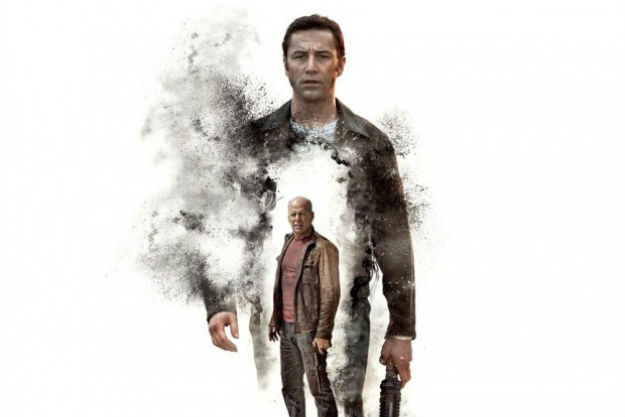 When Young Hero closes the loop by killing himself, he acknowledges the lie of those revenge stories. He’s no longer the same Young Hero who becomes Old Hero – the guy who gave up his friend to be tortured and mutilated in return for a few bars of silver. Instead, he’s the guy who realizes that to save everything, he has to sacrifice himself. He has to give something up, cut something away.
When Young Hero closes the loop by killing himself, he acknowledges the lie of those revenge stories. He’s no longer the same Young Hero who becomes Old Hero – the guy who gave up his friend to be tortured and mutilated in return for a few bars of silver. Instead, he’s the guy who realizes that to save everything, he has to sacrifice himself. He has to give something up, cut something away.
He has to grow up.
So, instead of Heroic mom taking the bullet, Young Hero takes the bullet, thus ending all the death and misery and destruction wrought by his own Future self.
The woman he loved in the future? Saved. The mom? Didn’t have to sacrifice herself. The kid? Saved from a life of crime (presumably). The loopers? Well, we’ll see. And the future? Well, who knows?
All of the loopers eventually close their loop. This one just did it in the way most beneficial to everyone. And he got nothing for it. No monuments. No love. No glory.
Now, astute folks will point out that we’ve saved the lives of many by killing one, and isn’t that effed up, because hey, we shouldn’t be killing people at all. And I’d say, yeah, sure, but how many American heroes do we see trot off to their deaths without “winning” something first or being promised something? How many sacrifice their lives without an audience to witness it? And how many sacrifice their lives without taking anyone else with them in that death?
In the U.S. these days, we have a wildly extended adolescence. It wasn’t until I started spending time with my nephew that I realized just how incredibly selfish we all are from the get-go. Compassion and cooperation, sharing and selflessness are things that must be taught, and these days, they are things we hang onto for an incredibly long time. We celebrate them. We celebrate the self, and getting everything we want at the expense of others. We crush people. Not our enemies, not bad guys, but just… people. And we do it for no better reason than to do otherwise is seen as weak.
Looper, for me, was an old-school hero’s journey about how you grow up (or don’t). You can choose to live like a selfish bastard your whole life, and watch the world burn around you (and take it, burning, with you to the grave), or you can make smarter, less selfish choices, and save a whole lot of people in the process. No, that choice is certainly not always killing yourself for goodness sake (it’s a METAPHOR, people), but when you’re faced with perpetuating violence and selfishness or making the smarter, more diplomatic choice… well.
The selfless, diplomatic choice is far more often the heroic choice.
Going down, guns blazing at your foes, is more often the selfish one.
